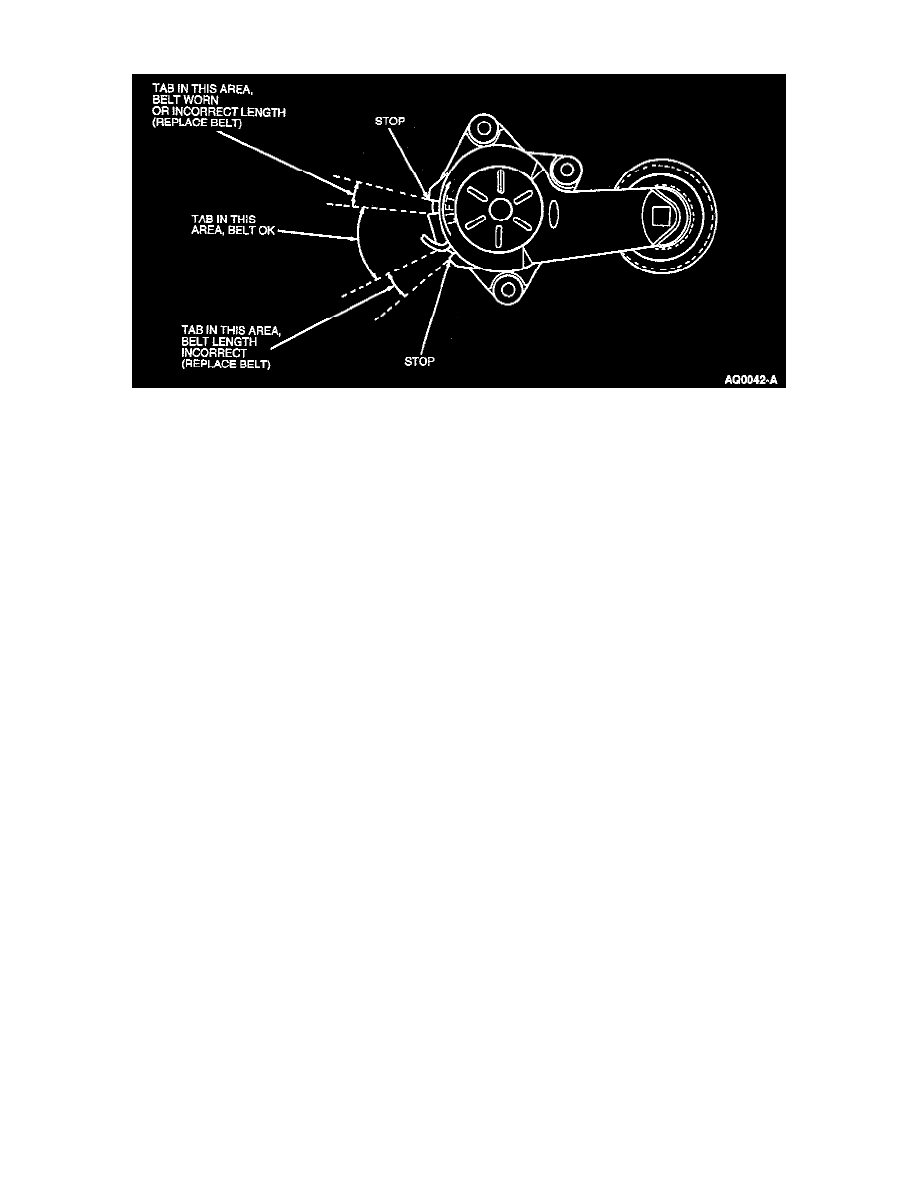Mustang Cobra V8-281 4.6L DOHC VIN V MFI (1997)

Drive Belt Tensioner: Testing and Inspection
1. With the engine running, observe drive belt tensioner movement. The drive belt tensioner should move (respond) when the A/C compressor cycles
or when the engine is accelerated rapidly. If the drive belt tensioner movement is constant and excessive, a pulley or shaft is probably bent or a
pulley is out of round. In rare cases, excessive drive belt rideout (uneven depth of grooves in drive belt) can cause excessive drive belt tensioner
movement. This condition can be checked by replacing the suspect drive belt with a new drive belt and repeating the observation.
2. With engine OFF, check for proper drive belt routing. Service as required.
3. Inspect the drive belt tensioner wear indicator to make sure the drive belt is within operating range. Replace the drive belt as required.
4. Automatic tensioners are calibrated at the factory to provide the correct amount of tension to the belt for a given front end accessory drive (FEAD)
system. Unless a spring within the drive belt tensioner assembly breaks or some other mechanical part of the drive belt tensioner fails, there is no
need to check drive belt tensioners for proper tension.
5. The only mechanical check that need be made, if there is any doubt about the tensioner function, would be to remove the belt in the area of the
drive belt tensioner (to avoid belt contact) then using a 3/8-inch breaker bar, rotate the drive belt tensioner from its relaxed position through its full
stroke and back to the relaxed position to assure that there is no stick, grab or bind, and to assure that there is tension on the spring. It is a normal
condition for the drive belt tensioner to be moving, under certain conditions, when the engine is running. If the drive belt tensioner meets these
criteria, it should be assumed to be good.
